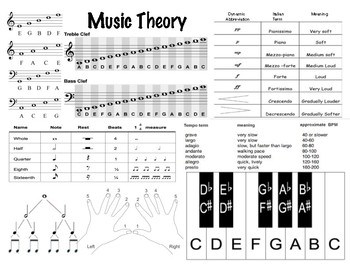



On Top – one or more members play on the front side of the beat, giving a sense of forward movement.Lock – when the musicians are in solid time with each other-most often refers to the bass and drums.when a guitar lays out on the first verse, but plays during the second verse it can give the song a lift. Lift – when the energy “lifts” in part of the song.Lick – typically a unison line between several instruments in the band, Ex.Lay out – when a member(s) of the band doesn’t play for a section.Lay back – one or more musicians play behind the beat, giving a “laid back” feel to song.Kick pattern – typically a one- or two-bar pattern established by the drummer.Kick – 1) another name for the bass drum or 2) rhythmic “hit” by the horns, or rhythm section, usually on the “e,” “and,” or “a” of a beat.Breakdown is when a number of instruments “drop out,” typically leaving only drums or drums/bass. Prechorus is a section between the verse and the chorus. Bridge is a section that is typically different from the rest of song, e.g. Intro, verse, prechorus, chorus, bridge, breakdown, out (or outro) – various sections of a song.Horn stab – when the horns play a short, tight, punctuated line.Hook – most memorable part of a song it’s what “hooks” the listener.Four to (on) the floor – typically, when the drummer plays the kick on all four downbeats-sometimes called a “Stevie” beat.keyboard player, can you play a football (pad) over the bridge changes? Football/Diamond – refers to how a rhythmic whole note appears on a chart.Comp – (short for accompanying or to complement) when the keyboard or guitarist plays rhythmic figures following the chord progression.Can also be played on all four beats, Ex.

Chank – when the guitarist plays along with the snare on beats 2 and 4, giving tonality to the snare.The keyboard can sometimes fill this role, too. Bubble – typically played by the guitar a muted, staccato countermelody that “bubbles” underneath the surface of a tune.Break – 1) where the entire band stops within the form, typically for a solo, or 2) a drum break, similar to a breakdown Ex.While this list is not exhaustive, it does contain a majority of terms I used on an almost daily basis: Given that several of the earliest R&B musicians came from a jazz background, it makes sense there is a similarity in the vocabulary. That said, there are several terms which have been developed over the years by musicians-formally educated and not-to describe certain elements of a song. Some of the terminology we use in commercial music education is very similar to what we already use in a traditional and/or jazz setting. It can also be frustrating for your students who, more often than not, are already well versed in these genres! Photo Courtesy of Stephen Holley In the same manner, it can be equally daunting for a director with limited knowledge of popular styles to effectively manage a rehearsal in these styles. As you can imagine, it can be uncomfortable for a director with limited jazz knowledge to run a jazz band. I encourage you read the first two installments on the “why” and the “how” of PME to better understand why the topic why is not only educationally viable, but also vital to a diverse music curriculum and culture.Īs commercial/popular music ensembles continue to grow in popularity and acceptance in the academic world, one of the areas I’m often asked about is terminology and its similarity to traditional and jazz vocabulary.
MUSIC KEYS CHEAT SHEET SERIES
Welcome to the third article in our series on commercial/popular music education (PME). The Popular/Commercial Music Ensemble Cheat Sheet Popular Music Terms to Know
MUSIC KEYS CHEAT SHEET PROFESSIONAL


 0 kommentar(er)
0 kommentar(er)
